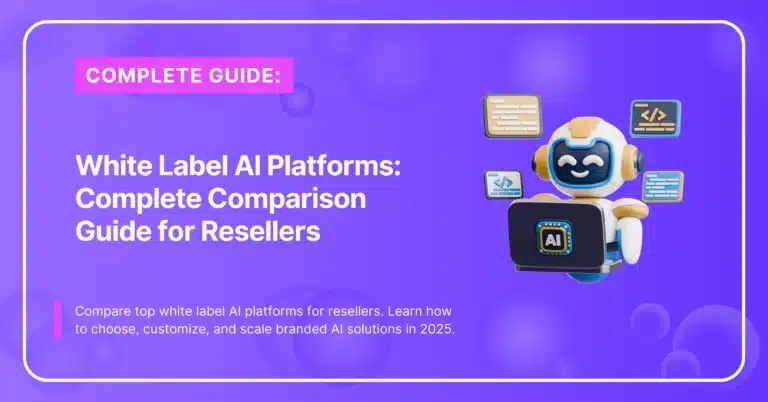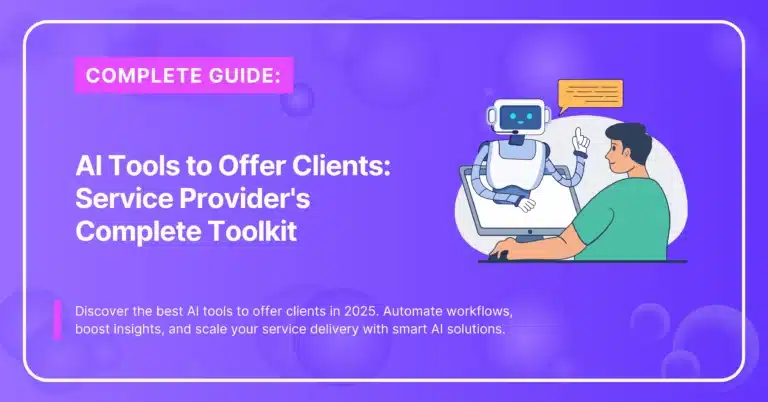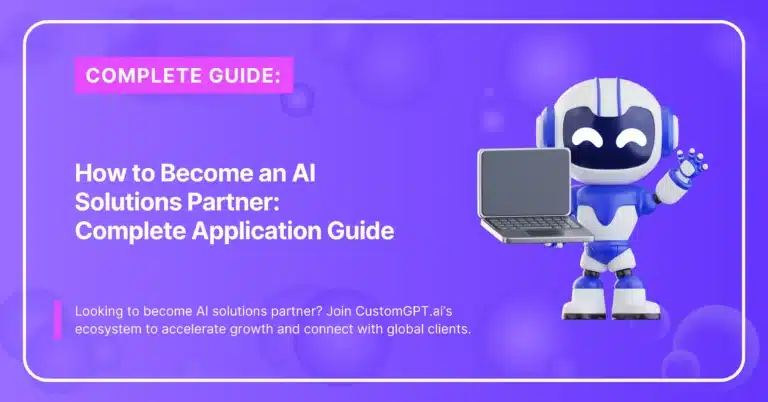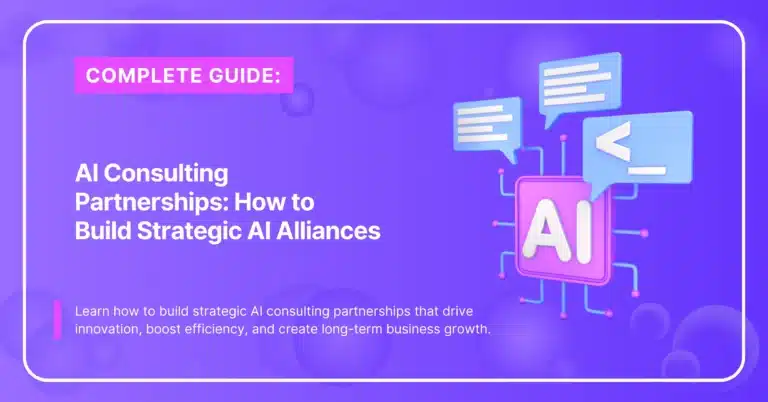AI adoption is exploding—but most businesses don’t know where to start.
They hear the hype, they see competitors moving fast, yet they lack the technical expertise, data infrastructure, and strategy to make AI programs deliver real business results.

Make Money With AI
Join our Partner Programs!
Boost your reputation, drive revenue and grow your business with CustomGPT.ai.
That’s where agencies and consultants step in. By offering AI deployment as a service, you can bridge the gap between cutting-edge technology and practical business outcomes.
With the right strategy, AI transforms from a tool into a growth engine for your clients and a new revenue stream for your agency.
In this guide, we’ll walk you through how to plan, implement, and scale AI solutions for clients — from defining the right use cases to integrating tools, ensuring compliance, and proving ROI.
Understanding AI and Its Business Value
Artificial Intelligence is often used as a catch-all term, but in practice it covers a spectrum of capabilities—from simple rule-based automation to sophisticated machine learning and generative models.
- Automation handles repetitive, predefined tasks with speed and accuracy.
- AI systems go further by learning from data, adapting over time, and generating predictive or creative outputs that drive decision-making.
The true business value of AI comes not just from its technical sophistication, but from how it’s applied to strategic goals.
For agencies and consultants, this means aligning AI capabilities with measurable outcomes—whether that’s reducing response times, improving customer personalization, or uncovering insights that fuel smarter strategies.
Success Metric to Track: Always link AI deployment to measurable outcomes such as cost savings, conversion rate lift, or reduced service times.
Why Agencies & Consultants Are Critical to AI Deployment
For most businesses, adopting AI isn’t a matter of willpower—it’s a matter of capability. AI requires technical expertise, data readiness, and a strategy that aligns with business goals. That’s where agencies and consultants become indispensable.
1. Translating Tech Into Business Value
Vendors and AI platforms often focus on features. Clients, however, care about outcomes: more leads, higher retention, faster operations.
Agencies bridge this gap by mapping AI tools to measurable business objectives, ensuring deployments aren’t just “cool tech experiments” but revenue-driving solutions.
2. Accelerating Time-to-Market
While enterprises might spend years building AI teams, agencies can deploy white-label and SaaS AI in weeks. This speed gives clients a competitive edge—especially in industries where being first to adopt AI sets the standard.
3. Reducing Risk & Complexity
From compliance requirements (GDPR, HIPAA) to ethical considerations, AI is complex. Consultants guide clients through data governance, vendor selection, and risk mitigation, ensuring AI solutions are both effective and safe.
4. Offering Ongoing Optimization
AI is not “set and forget.” It needs continuous tuning. Agencies provide ongoing monitoring, training, and scaling to maximize ROI over time, turning deployments into long-term partnerships.
Success Metric to Track: Time-to-market reduction and number of AI projects deployed within 90 days.
The Role of AI in Modern Agencies
AI isn’t just another tool—it’s reshaping how agencies deliver value. As client expectations evolve, agencies that integrate AI into their workflows position themselves not only as service providers but as innovation partners.
Shifts in Client Expectations
Clients today don’t just want campaigns or strategies—they expect speed, personalization, and measurable ROI. Traditional processes often struggle to keep up with these demands.
AI helps agencies deliver:
- Faster insights from real-time data.
- Hyper-personalized customer experiences at scale.
- Predictive models that anticipate client needs before they surface.
AI as a Value Multiplier
AI isn’t about replacing human creativity—it’s about amplifying it. When deployed strategically, it becomes a value multiplier, boosting both efficiency and innovation:
- Efficiency: Automate reporting, scheduling, and customer support.
- Creativity: Enhance content creation and ideation with AI tools.
The agencies that thrive in the coming years will be those that treat AI not as an add-on, but as a core capability woven into every stage of client delivery.
Success Metric to Track: Improvement in client satisfaction scores and reduction in operational hours per campaign.
Core AI Use Cases for Agencies
Artificial Intelligence is no longer a futuristic concept—it’s already reshaping how agencies deliver value to clients. Below are the most impactful areas where AI is driving transformation:
Marketing & Content Creation
AI tools accelerate creative workflows, producing ad copy, blog drafts, social media content, and SEO-optimized campaigns in minutes.
Beyond speed, they allow agencies to experiment at scale, test messaging variations, and personalize content for specific audiences—all without proportionally increasing resources.
Customer Support & Chatbots
AI-powered chatbots provide 24/7 client service, handle multilingual queries, and scale customer interactions without expanding headcount. For agencies, this means lower support costs and higher client satisfaction.
Well-designed bots also escalate complex issues to humans, ensuring service quality isn’t compromised.
Sales & Lead Generation
With predictive lead scoring and AI-driven personalization, agencies can focus on high-value prospects while automating repetitive outreach.
AI systems analyze client behavior, segment audiences, and craft tailored messaging—improving conversion rates and shortening sales cycles.
Data & Analytics
AI strengthens reporting and decision-making by uncovering patterns humans might miss. From real-time campaign optimization to forecasting future trends, agencies can deliver insights that help clients stay proactive rather than reactive.
The result is more strategic recommendations and measurable ROI.
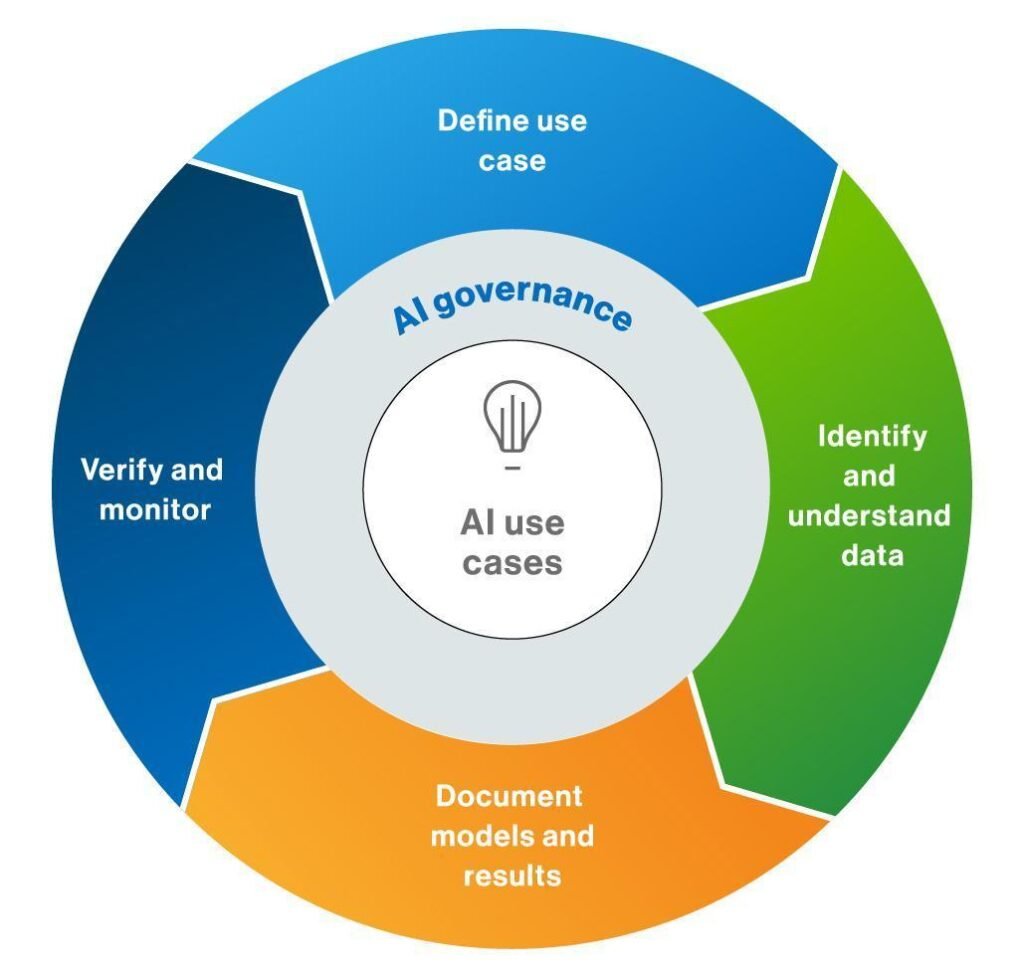
Implementation Roadmap
A successful AI deployment isn’t just about choosing the right tools—it’s about guiding clients through a structured, repeatable process. Here’s how agencies and consultants can create a roadmap that ensures adoption, scalability, and long-term ROI.
Needs Assessment & Goal Setting
Start with clarity. Identify client pain points, define measurable KPIs, and map AI use cases directly to business objectives. For example, is the priority reducing support tickets, generating more leads, or accelerating reporting?
Aligning technology to goals ensures buy-in and avoids “AI for AI’s sake.”
Integration with Existing Tools
AI should fit into the client’s stack, not replace it entirely. APIs and modular frameworks make it possible to embed AI into CRMs, marketing platforms, or analytics dashboards.
The smoother the integration, the faster the adoption—and the fewer disruptions to existing workflows.
Training Teams & Clients
Even the most advanced AI falls flat without human adoption. Agencies should build training plans for both client teams and internal users.
This includes playbooks, onboarding sessions, and change management strategies. The goal: make AI intuitive, not intimidating.
Governance & Compliance
AI deployments must meet regulatory and ethical standards. From GDPR compliance to bias mitigation, agencies should set up governance frameworks early. This builds trust with clients and ensures solutions scale without introducing hidden risks.
Success Metric to Track: Increased campaign ROI, chatbot adoption rates, and lead conversion percentages.
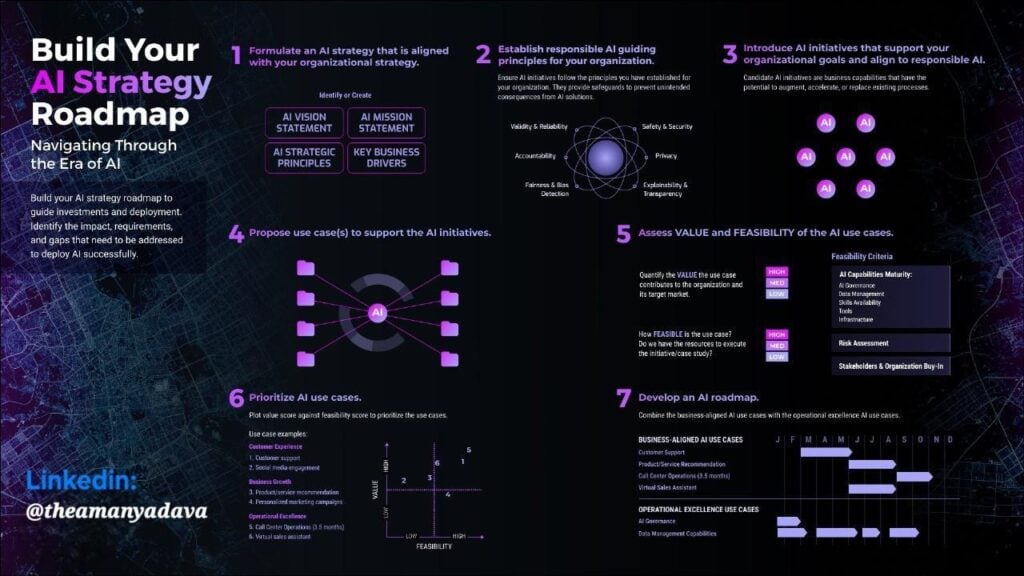
Measuring ROI and Client Impact
AI implementation only delivers value if agencies can measure its outcomes. Tracking performance ensures clients see clear ROI and helps agencies refine their strategies over time.
- Client Engagement: Increases in chatbot usage, content interaction, or session length.
- Response Times: Reduction in customer service wait times and ticket resolution speeds.
- Campaign Performance: Improved ad click-through rates, SEO rankings, or lead conversions.
- Return on Investment (ROI): Cost savings from automation compared against revenue growth.
- Operational Efficiency: Decrease in manual tasks and increased output per employee.
Real World Cases
- Customer Support: In customer support, AI chatbots have been shown to handle up to 80% of routine inquiries, cutting support costs by as much as 30%.
- Marketing Campaigns: On the marketing front, Nova’s AI-driven creative optimization boosted ad performance, with clients reporting an average 20% lift in click-through rates.
- Analytics & Reporting: Similarly, a Google-backed campaign using AI video optimization generated a 3.8% increase in ad recall overall and a remarkable 6.5% lift among younger demographics in just four days.
By tying AI initiatives directly to business outcomes, agencies demonstrate tangible value and position themselves as long-term strategic partners—not just tech vendors.
Strategic Ways to Deploy AI for Clients
Rolling out AI successfully requires more than choosing the right tool — it requires a clear, structured, and repeatable roadmap. Agencies and consultants must balance strategy, technology, and people to ensure deployments achieve tangible business outcomes.
Below is a detailed nine-step framework you can adapt for any client.
1. Define Clear Business Objectives
AI should never be deployed for its own sake. The first step is helping clients clarify why they want AI and what success looks like.
- Start by interviewing stakeholders across departments (e.g., marketing, customer service, operations). Each group may have different goals.
- Frame objectives in terms of measurable outcomes: “reduce call center wait times,” “shorten sales cycles,” “improve ad campaign targeting.”
- Avoid vague ambitions like “use AI to be innovative.” Ground everything in business impact.
Tip for Agencies: Use a “goal-to-use-case” worksheet where you map each client objective to at least one AI capability. For example:
- Objective: “Lower support costs.”
- AI Use Case: Deploy chatbots to handle common FAQs.
2. Conduct Readiness & Data Audits
Even the best AI system will fail if the underlying foundation is weak. Agencies must evaluate whether clients are AI-ready in three key areas:
1. Data Quality
- Is data consistent, labeled, and accessible?
- Are there gaps in historical records or silos between departments?
- Example: A retail client may have purchase history in one system and customer feedback in another — AI needs both to work effectively.
2. Infrastructure
- Does the client already use cloud services, CRMs, or marketing automation tools?
- Are APIs available for integration?
3. Organizational Culture
- Do teams understand how AI will support them?
- Is there leadership commitment to change, or skepticism that may cause resistance?
Tip for Agencies: Deliver a “readiness report” to clients that scores them across these dimensions. This not only sets expectations but also highlights areas you’ll need to address before implementation.
3. Prioritize Use Cases
Once objectives and readiness are clear, the next step is deciding which AI projects to start with. Not all opportunities have the same value or feasibility.
- Quick wins: Projects that deliver results in weeks, not months. Examples include chatbot deployment, automated reporting dashboards, or content generation tools.
- Strategic projects: Larger initiatives that require more data or integration, such as predictive analytics for customer churn, dynamic pricing, or advanced personalization engines.
Agencies should aim for a balanced portfolio: quick wins build trust and momentum, while strategic projects create lasting differentiation.
Tip for Agencies: Use a value vs. complexity matrix. Map each potential use case on two axes — expected business value and implementation difficulty. Prioritize projects in the “high value, low complexity” quadrant first.
4. Build the Business Case
Even when the value is clear, clients need a structured case to secure internal approval.
A business case for AI should include:
- Problem Statement: What issue is the client solving?
- Proposed Solution: Which AI approach addresses it?
- Expected Impact: How will processes, costs, or revenue be affected?
- Risks and Mitigation: Potential challenges and how you’ll manage them.
- Implementation Timeline: Phases, milestones, and checkpoints.
Tip for Agencies: Frame your business case using before-and-after workflows. Show how processes run today versus how they’ll run with AI. This visualization often makes benefits easier to grasp for executives.
5. Select the Right Technology Stack
With approval in place, it’s time to choose the right technology. The options vary, but most deployments fall into three categories:
- White-Label AI: White label platforms are pre-built AI platforms agencies can rebrand. Great for speed-to-market and packaged services.
- SaaS AI Tools: Subscription-based tools like CustomGPT.ai. Ideal for small- to mid-sized businesses that want fast adoption.
- Custom-Built AI: Fully tailored models and pipelines developed for complex, high-compliance industries like healthcare or finance.
Comparing AI Solutions: White Label, Custom-Built, and SaaS
| Model | Pros | Cons | Best For |
| White-Label AI | Fast deployment, branded solutions, scalable, API-driven customization | Less control over core algorithms, vendor dependency | Agencies wanting speed-to-market & new revenue streams |
| Custom-Built AI | Full control, tailored for niche/complex use cases, long-term differentiation | High cost, long timelines (12–18 months), requires in-house AI expertise | Agencies in regulated or highly specialized industries |
| Off-the-Shelf SaaS | Instant setup, low cost, vendor-managed updates | No white-labeling, limited customization, harder to differentiate | Agencies seeking quick tactical wins with minimal setup |
The key is matching the client’s needs with the right balance of cost, customization, and scalability.
Tip for Agencies: Avoid vendor lock-in by selecting tools that support API extensibility. This ensures you can pivot as client needs evolve.
6. Pilot Test & Refine
Launching AI at full scale immediately is risky. Instead, agencies should run pilot projects in one department or workflow:
- Example: Start with chatbots handling FAQs before extending them to more complex customer interactions.
- Measure performance against defined benchmarks.
- Gather feedback from users interacting with the system daily.
This approach allows issues to be addressed early, reduces client risk, and provides concrete evidence of success before scaling.
Tip for Agencies: Set a clear timeframe for pilots (e.g., 60–90 days) and define specific “go/no-go” criteria before expansion.
7. Plan for Compliance & Risk
AI projects are subject to legal, ethical, and reputational considerations. Agencies must help clients navigate:
- Regulations: GDPR in Europe, HIPAA in healthcare, or other industry-specific rules.
- Data Security: Data security, encryption, role-based access, and audit logs.
- Ethical AI: Addressing bias in training data and ensuring fairness in decision-making.
Tip for Agencies: Create a compliance checklist for every AI project. Review it with clients before deployment to ensure nothing is overlooked.
8. Train Teams & Manage Change
Technology adoption hinges on people. Even the most sophisticated AI will fail if teams don’t know how to use it. Agencies should:
- Provide playbooks and quick-start guides.
- Run live workshops or webinars tailored to different roles (e.g., marketers, analysts, customer service reps).
- Identify “AI champions” within the client organization who can support peers and promote adoption internally.
Tip for Agencies: Pair technical training with change management communication. Explain not just how AI works, but why it helps employees — reducing repetitive tasks rather than replacing jobs.
9. Define Measurement & Feedback Loops
AI is never a one-and-done project. Once deployed, it must be continuously evaluated and optimized. Agencies should set up:
- Dashboards: Show ongoing performance against the original business objectives.
- Review Cycles: Quarterly or monthly check-ins with client teams to evaluate results.
- Feedback Loops: Collect insights from employees and customers interacting with the AI to inform adjustments.
Tip for Agencies: Tie reviews back to the original business case. Demonstrating progress against agreed objectives builds long-term trust and paves the way for future projects.

Technical Aspects of AI Solution Development
Behind every client-facing AI deployment lies a set of critical technical components. Agencies and consultants don’t need to build everything from scratch, but understanding the technical backbone helps ensure successful implementation and integration.
Data Pipelines & Preparation
AI systems are only as good as the data they’re trained on. Clean, structured, and well-labeled datasets reduce bias and improve model accuracy.
Agencies must consider processes like data ingestion, cleansing, and normalization to align different client data sources into a usable format.
Model Selection & Training
Choosing the right model depends on the use case. Agencies may rely on pre-trained large language models (LLMs) for tasks like chatbots and content creation, or specialized models for industry-specific applications such as fraud detection or medical insights.
Fine-tuning with client-specific datasets ensures relevance and better results.
API Integration & Extensibility
Most modern AI solutions rely on APIs for seamless integration into client ecosystems. This modular approach makes it easier to connect AI with CRMs, marketing platforms, or analytics dashboards—without disrupting existing workflows.
Scalability also becomes easier with cloud-based API architectures.
Security & Compliance
Data privacy and compliance are non-negotiable. Agencies should ensure that AI solutions adhere to GDPR, HIPAA, or industry-specific standards, depending on client needs.
This includes encryption, secure storage, and audit trails to maintain client trust.
Continuous Monitoring & Optimization
AI isn’t a “set it and forget it” solution. Agencies should implement monitoring tools that track accuracy, drift, and performance over time.
Regular retraining, updates, and human oversight keep the system aligned with client goals and evolving business conditions.
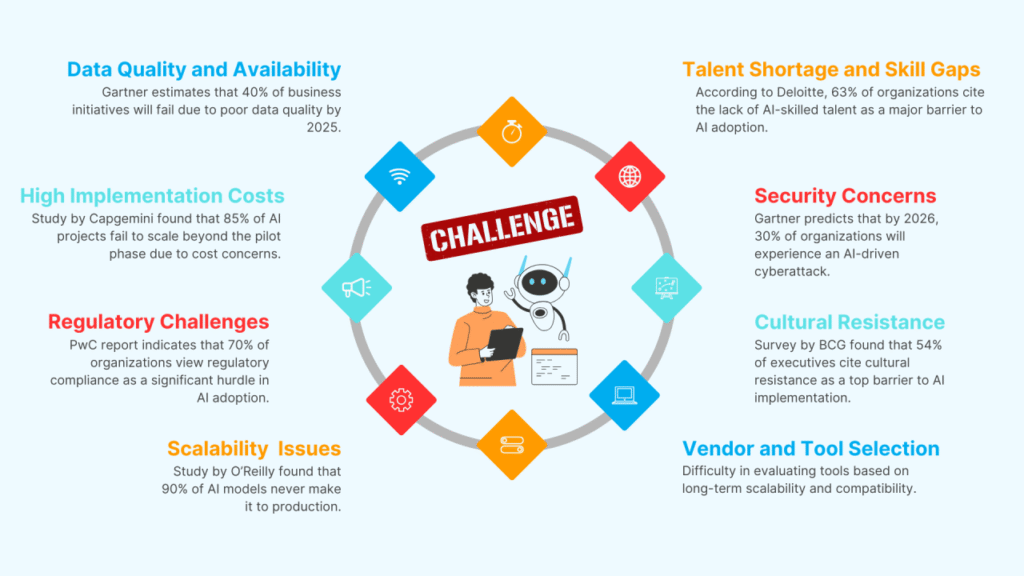
Common Pitfalls in AI Deployment (and How to Avoid Them)
Many agencies/consultants try to jump into AI implementation quickly because of the hype. But if you skip foundational steps, projects either stall, fail to deliver ROI, or damage client trust.
Here are some common common pitfalls in AI deployment:
- No Clear Objectives: Deploying AI just because it’s trendy leads to “AI for AI’s sake.”
- Poor Data Readiness: Dirty, unstructured, or insufficient data cripples AI performance.
- Overpromising Results: Saying AI will “replace teams” or “guarantee 10x ROI” sets agencies up for unhappy clients.
- Ignoring Compliance/Ethics: Overlooking GDPR, HIPAA, or algorithmic bias can create legal risks.
- No Training or Change Management: Clients don’t adopt tools they don’t understand.
Building Long-Term Client Partnerships with AI
Consultants and agencies don’t just want one-off implementation projects—they want recurring revenue and lasting relationships.
Here’s how AI can become a service solution provider model, not just a deliverable:
- AI Maintenance Retainers: Offer packages that include model retraining, system monitoring, and compliance checks.
- ROI Dashboards & Reporting: Create dashboards that clients can check monthly to see clear AI-driven results.
- AI Scalability Roadmaps: Position future phases of AI adoption (e.g., start with chatbots → move to predictive analytics → then full automation).
- Strategic Partner Positioning: Emphasize that agencies aren’t just tech installers; they’re advisors helping clients navigate evolving AI opportunities.
Introducing CustomGPT.ai Solutions Partner Program
The CustomGPT.ai Solutions Partner Program enables organizations to build, sell, co-develop, and support AI-powered solutions using CustomGPT’s platform, combining hands-on technical collaboration with go‑to‑market support.
Who Should Join?
Ideal for:
- Agencies & consultancies embedding conversational AI, analytics, or white-label GPT solutions
- Technology service providers accelerating digital transformation efforts
- Independent Software Vendors (ISVs) looking to integrate advanced NLP or generative AI into existing products
Key Benefits
| Feature | Details |
|---|---|
| Enterprise discounts | Reduced pricing on annual enterprise-level plans |
| Revenue share | Earn up to 15% commission over two years on client subscriptions |
| Free trial | 15-day partner trial period to test and strategize |
| Solutions Directory | Get featured in CustomGPT’s directory to increase visibility |
| Dedicated support | Direct access to onboarding, sales enablement, and troubleshooting support |
| Co-selling opportunities | Collaborate with CustomGPT’s sales team on joint pitches |
| Early access | Be among the first to use new features and influence roadmap direction |
Streamlined Onboarding Process
- Intro Call: To get started, schedule an introductory call with a CustomGPT.ai partner specialist.
- 15-Day Trial & Coaching: Access the platform alongside tailored guidance to understand client pain points and align offering.
- Onboarding & Launch: Gain exclusive partner benefits—discounted pricing, directory listing, qualified leads, and co‑selling opportunities.
Why It Stands Out
- Fast, No-Code Deployment: Leverage ready-built templates, connectors, and no-code tools for rapid solution delivery without writing code.
- Enterprise-Grade Compliance: Built-in support for GDPR, SOC2, audit trails, role-based access, and ethical AI practices.
- Robust Partner Ecosystem: Co-sell, influence roadmap, get early feature access, and scale with confidence.
The CustomGPT.ai Solutions Partner Program empowers you to rapidly launch, monetize, and scale AI services—without building expensive infrastructure or deep teams.
With co-sell support, enterprise reliability, and competitive incentives, it’s a compelling opportunity for agencies, consultants, and tech vendors.
Future Trends in Agency AI
AI is evolving rapidly, and agencies that anticipate these shifts will be best positioned to capture long-term value. Three trends in particular are shaping the future of client services:
Generative AI 2.0
The first wave of generative AI focused on content creation—text, images, and simple automation. The next wave will bring multimodal capabilities (text, audio, video, and code) along with greater accuracy, contextual awareness, and personalization.
For agencies, this means moving beyond copywriting to delivering immersive client experiences powered by generative tools.
AI + Automation Convergence
AI will increasingly work hand-in-hand with automation platforms, creating end-to-end workflows that span marketing, sales, and customer support.
Instead of simply generating outputs, AI systems will also trigger actions automatically, reducing the need for manual intervention. This convergence allows agencies to offer clients fully orchestrated solutions, not just isolated tools.
Industry-Specific AI Assistants
Generic chatbots are giving way to verticalized AI assistants trained on specialized datasets. Whether it’s healthcare compliance bots, finance risk advisors, or retail inventory optimizers, agencies will differentiate themselves by delivering domain-specific AI solutions.
Clients will increasingly demand assistants that understand their industry language, regulations, and customer behavior.
FAQs
How to deploy AI solutions for clients?
Deploying AI for clients means aligning technology with business goals and guiding them through a structured process. Agencies should:
Define objectives linked to KPIs (e.g., reduce support costs, increase lead conversions).
Audit data and infrastructure to ensure readiness.
Select the right technology (white-label, SaaS, or custom AI).
Pilot test in a small workflow to validate results.
Train client teams and manage change for adoption.
Monitor, optimize, and scale AI solutions over time.
What are the steps in AI client deployment?
Deployment typically starts with defining objectives, preparing data and infrastructure, and choosing the right tools. From there, agencies introduce AI gradually, refine it through testing, and scale it once results are proven.
How long does AI deployment take for clients?
Timelines depend on project complexity:
Quick wins (e.g., chatbots, automated reporting): 4–12 weeks.
Mid-scale projects (e.g., lead scoring, content personalization): 3–6 months.
Custom AI builds (e.g., industry-specific predictive analytics): 12–18 months or longer.
What are common AI deployment challenges?
Agencies and clients often face:
Unclear objectives: AI deployed for hype rather than outcomes.
Poor data readiness: dirty, siloed, or insufficient data weakens results.
Overpromising outcomes: setting unrealistic expectations damages trust.
Compliance & ethics risks: ignoring GDPR, HIPAA, or bias/fairness issues.
Low adoption: teams resist AI tools without proper training or change management.
How to ensure successful AI implementation for clients?
To drive adoption and ROI, agencies should:
Start with business-driven goals, not tech.
Deliver quick wins to build trust, then scale to larger projects.
Provide clear training, playbooks, and ongoing support.
Maintain governance and compliance frameworks.
Use dashboards and regular reviews to prove measurable impact.
Conclusion
AI is no longer just a trend — it’s a business necessity. But most organizations lack the expertise to move from curiosity to measurable outcomes.
That’s where agencies and consultants create real value: by turning AI into structured, practical solutions that drive growth, efficiency, and client satisfaction.
With a clear roadmap, proper readiness checks, and continuous optimization, you can guide clients through adoption with confidence — and position yourself as a long-term strategic partner, not just a service provider.
Ready to Start Client Deployment? Start Solutions partner program to take the first step toward building AI solutions that deliver measurable ROI for your clients.



